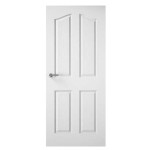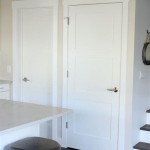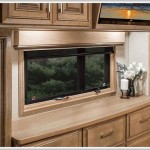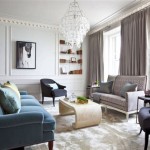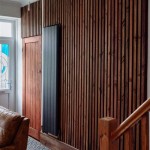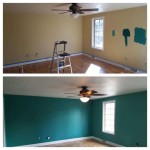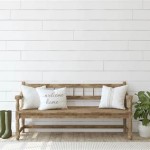Contemporary Interior Design Definition
Contemporary interior design is often confused with modern interior design. While they share some similarities, they are distinct styles with unique characteristics. Contemporary design refers to the design of the present day and is constantly evolving. It reflects current trends and incorporates fresh ideas, materials, and approaches. Modern design, on the other hand, refers to a specific design movement that originated in the early to mid-20th century.
Key Elements of Contemporary Interior Design
Several key elements define contemporary interior design. Understanding these elements allows for a clearer grasp of the style and its application.
Emphasis on Open Space and Natural Light: Contemporary interiors prioritize open floor plans and maximize natural light. Large windows, skylights, and minimalist window treatments are common features. This focus on light and space creates an airy and welcoming atmosphere.
Neutral Color Palettes with Bold Accents: Neutral colors like white, beige, gray, and black form the foundation of contemporary color schemes. These neutrals provide a backdrop for bolder accent colors in furnishings, artwork, or decorative accessories. This creates a balanced aesthetic that is both calming and visually engaging.
Clean Lines and Geometric Shapes: Furniture and architectural details in contemporary design often feature clean lines and geometric shapes. This creates a sense of order and simplicity. Ornate details are generally avoided in favor of sleek and streamlined forms.
Mix of Textures and Materials: Contemporary design embraces a mix of textures and materials. Natural materials like wood, stone, and leather are often combined with man-made materials like metal and glass. This interplay of textures adds depth and visual interest to the space.
Focus on Functionality and Sustainability: Functionality is a key consideration in contemporary design. Furniture and fixtures are chosen for their practicality and usability, as well as their aesthetic appeal. Sustainability is also becoming increasingly important, with a focus on eco-friendly materials and energy-efficient design.
Distinguishing Contemporary from Modern Design
While both styles value simplicity and functionality, there are key differences. Modern design adheres to the principles established in the mid-20th century, often featuring iconic furniture pieces and a strict adherence to specific materials like wood, leather, and chrome. Contemporary design, however, is more fluid and incorporates current trends and materials. It is less bound by historical precedent and is constantly adapting to the present.
The Evolution of Contemporary Design
Contemporary design is a constantly evolving reflection of current trends and societal influences. As technology advances and lifestyles change, so too does contemporary interior design. For example, the rise of smart home technology is increasingly integrated into contemporary interiors. Similarly, growing awareness of environmental issues has led to a greater emphasis on sustainability in design choices.
Incorporating Contemporary Design Elements
Implementing aspects of contemporary design can range from subtle updates to complete renovations. Introducing minimalist furniture pieces, incorporating a neutral color palette, or maximizing natural light can significantly impact a space. It is important to consider the existing architecture and personal preferences when incorporating contemporary elements.
Contemporary Design in Different Spaces
Contemporary design principles can be applied to various spaces, from residential homes to commercial offices. In residential settings, it can create a comfortable and stylish living environment. In commercial spaces, contemporary design can project a professional and modern image.
The Future of Contemporary Design
The future of contemporary design promises continued innovation and adaptation. Emerging technologies, evolving materials, and changing societal values will undoubtedly shape the direction of contemporary interiors. The focus on sustainability and integration of smart technology is expected to play an even greater role in the coming years.
Contemporary Design and Personal Expression
While contemporary design has defining characteristics, it also allows for personal expression. Individual preferences can be reflected in the choice of artwork, accessories, and accent colors. This flexibility allows individuals to create unique spaces that reflect their personality while adhering to the core principles of contemporary design.

Contemporary Vs Modern Interior Design Everything To Know Décor Aid

Contemporary Design Style And The Essentials To Master It Décor Aid

Difference Between Modern Vs Contemporary Interior Design

5 Key Elements That Define Contemporary Interior Design Avaato Miami Based Firm

Contemporary Vs Modern Interior Design Everything To Know Décor Aid

Contemporary Design Style And The Essentials To Master It Décor Aid

Differences Between Mid Century Modern Vs Contemporary Design Style Adria

Modern Design Vs Contemporary Difference Between And Styles

Contemporary Design Style 101 Everything You Need To Know About

5 Key Elements That Define Contemporary Interior Design Avaato Miami Based Firm
Related Posts

